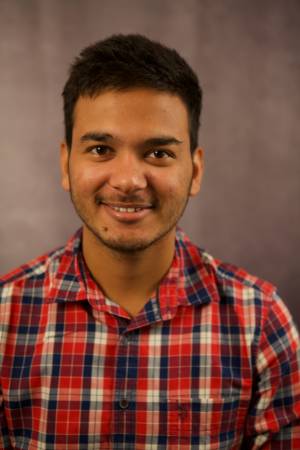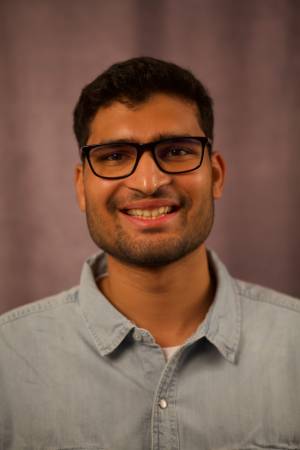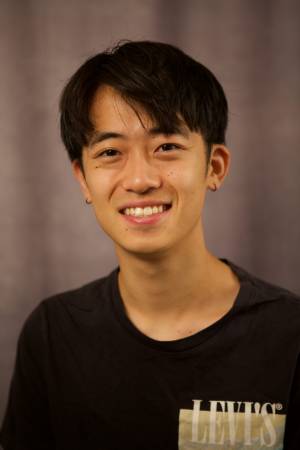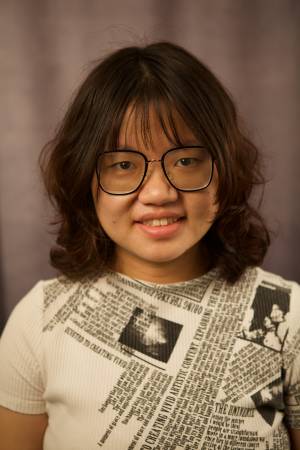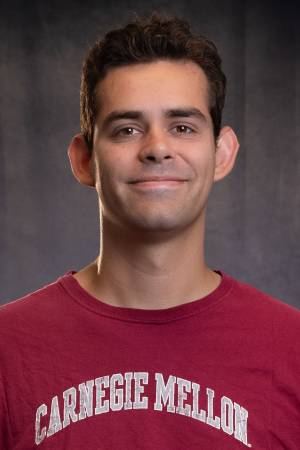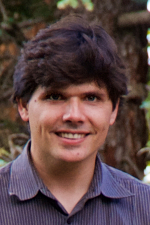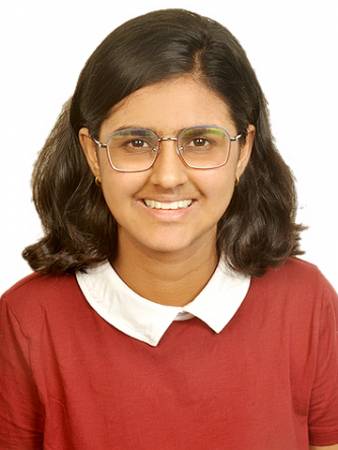
Software agents and robots ranging from autonomous vehicles to intelligent assistants have become commonplace. We envision a future where this trend accelerates leading to large numbers of networked humans and robots working together for numerous applications ranging from manufacturing to environment exploration, crisis response and search and rescue. These multi-robot systems will be coordinating autonomously, and in many cases will be interacting with humans in varied ways and modalities. I am interested in both (a) Human Single- and Multi-Robot Teaming and (b) developing algorithms and techniques for Autonomous Multi-Robot Coordination.
Human-Robot Teaming
Teamwork is a set of interrelated reasoning, actions and behaviors of each team member that adaptively combine to fulfill common objectives. Experimental evidence of high performance human teams has resulted in a set of states and processes for team effectiveness where trust has been identified as a crucial ingredient. As robots become more autonomous, some of these characteristics will be important in human robot interactions. In particular, we have done work in human interaction and teaming with multi-robot systems. Trustworthy human autonomy has been identified as one of the most important issues in the DoD’s vision of future systems. The Air Force’s Center of Excellence that I lead has trustworthy teaming of humans and machines as one of its most important goals.
Individualized Adaptation in Human-Autonomy Teams (HATs)
The ability to collaborate with previously unseen human teammates is crucial for artificial agents to be effective in human-agent teams (HATs). Due to individual differences and complex team dynamics, it is hard to develop a single agent policy to match all potential teammates. We have studied both human-human and human-agent teams in a dyadic cooperative task, where the team mates have different roles and collaborate in a continuous control task in the presence of an adversary. Our results show that the team performance is influenced by both players’ individual skill level and their ability to collaborate with different teammates by adopting complementary policies. Based on human-human team results, we have developed an adaptive agent that identifies different human policies and adopts a complementary partner policy to optimize team performance. The adaptation method relies on a novel similarity metric to infer human policy and then selects the most complementary policy from a pre-trained library of exemplar policies based on imitation learning and reinforcement learning. We conducted human-agent experiments that showed that our adaptive agent was effective in collaboration with humans to improve team performance. We are currently exploring additional issue such as teams with more than two members and learning discreet communication.
Agent Theory of Mind to Assist Human Teams
Humans naturally build high-level models of those around them, and are able to make inferences about their beliefs, desires and intentions (BDI). These inferences allow people to anticipate the behaviors of others, use these predictions to condition their own behavior, and then anticipate potential responses. In both psychology and machine learning this is referred to as theory of mind (ToM). It aims to model not only the external behavior of other entities but their internal mental states as well. ToM can enable discovery of false or incomplete beliefs and knowledge and can thus facilitate interventions to correct false beliefs. ToM enables the system to better explain its predictions and interventions to a human as well as human teams, thus gaining people’s acceptability and trust. In this project we are exploring modular neural networks to enable agents to develop ToM of human teams.
Swarms and Human Swarm Interaction
Swarm robots have received increasing attention owing to their scalability and natural robustness to individual robot failures. Robotic swarms consist of simple, typically homogeneous robots that interact with other robots and the environment. The swarm members are coordinated via their simple local control laws to generate emergent behaviors such as flocking, rendezvous, and deployment. Swarms are envisioned to be important for large-scale applications in unstructured and dynamic environments. Potential applications include environmental monitoring, exploration, search and rescue, agriculture.
For these applications, the presence of humans is important since a human operator can mitigate inefficiencies of swarm behaviors caused by limited sensing and communication capabilities. Also, humans can provide important information to the swarm such as changes in the mission goal and requirements. We have been exploring both algorithms for influencing swarm behavior and human capabilities to comprehend and guide swarms. Over the course of this research we have developed an inverse reinforcement learning (IRL) algorithm that learns the reward function of a human operator in order to predict trust fluctuations in real time. This is to our knowledge the first computational model of human trust towards a robotic swarm. We have explored the ability of multi-robot systems to accommodate different behaviors simultaneously within a single connected swarm, called behavior mixing. We have developed for the first time optimal algorithms for behavior mixing as well as for safe and resilient swarm operation.
Multi Robot Autonomous Systems
Deep RL for Multi-Agent Systems
Given the limitations of pre-programmed control based tactics, such as limited repertoire swarms, we are currently exploring approaches that are agnostic to context/model information and do not require careful design of algorithms for each swarm behavior. To that end, we use and develop model-free AI methods such as Deep Reinforcement Learning (DRL). Multi-agent RL poses an entirely new set of challenges as from the perspective of any one agent, the other agents, which are also learning, make the environment non-stationary, which in turn requires the agent to adapt its own behavior to theirs. Over a series of studies, we have developed a graph neural network (GNN) approach that allows agent scalability to large numbers. The agents learn in a centralized fashion, overcoming the nonstationarity problem and execute independently while exhibiting few-shot generalization. We applied this approach in multiple competitive/cooperative problems including formation control in target coverage, pursuit-evasion, defense against attacking adversaries, and leader hiding to avoid adversarial detection.
Multi-Robot Adaptive Environmental Sampling
We are motivated by Applications in Agriculture where salient features extracted from multi-modal, multi-fidelity sensors and information sources will be fused with biophysical knowledge to build accurate plant breeding models that would increase yield, be more nutritious and be more disease resistant. Agricultural fields are vast and periodic manual collection of data is inaccurate and laborious. We study how a team of robots can efficiently navigate to best understand the environment which is referred to as adaptive sampling, or informative sampling. We consider the problem of online environmental sampling and modeling for multi-robot sensor coverage, where a team of robots spreads out over the workspace in order to optimize the overall sensing performance. In contrast to most existing works on multi-robot coverage that assumes prior knowledge of the density of latent variables of interest, (e.g. plant high yield or resistance to disease), we relax this assumption and enable the robot team to efficiently learn the model of the unknown density function on-line. To capture significantly different components of the latent variables we have developed a new and effective approach based on mixture of locally learned Gaussian Processes for collective model learning and an information-theoretic criterion for simultaneous adaptive sampling by multiple robots.
Physical coupling of multiple robots for multiple flexible configurations
In collaboration with Zeynep Temel we investigate the physical coupling of robot swarms, as well as implement and test existing control and planning algorithms on such a coupled system.
Our goal is to build a robotic swarm where 1) individual robots can dynamically couple and decouple with each other, 2) the coupling mechanism consumes minimum energy, 3) there is sufficient mobility and controllability of each individual robot to navigate within the environment, and 4) the fabrication of the robot is easy and of low cost. To date, we have developed designs and algorithms and shown via hardware experiments that the robots are able to couple with each other to cross gaps and decouple to perform individual tasks. We anticipate these flexible and dynamically formed configurations will be useful in unstructured environments, such as search-and-rescue, earthquakes or collapsed buildings, where the environment is dynamic and complex.
Research Topics
- AI Reasoning for Multi-Robot Systems
- Networked Robots
- Human Robot Collaboration
- Field & Service Robotics
- Social Robots
- Manufacturing Robotics
- Behavior-based Systems
- Aerial Robotics
- Human-Centered Robotics
- Biologically Inspired and Evolutionary Robotics
- Roboethics: Social and Ethical Implications of Robotics
- Manipulation & Interfaces
- Robotics Foundations
- AI Reasoning for Articulated Systems
- Learning and Classification
- Roboethics: Social and Ethical Implications of Robotics
- Roboethics: Social and Ethical Implications of Robotics
- Multi-Robot Planning & Coordination
current phd students
current masters students
past masters students
- Akshat Agarwal
- Siddharth Agrawal
- Sarthak Bhagat
- Yu Quan Chong
- Ankur Deka
- Akshay Dharmavaram
- Yifan Ding
- Tejus Gupta
- Swaminathan Gurumurthy
- Shuo Han
- Bruno Hexsel
- Vidhi Jain
- Rohit Jena
- Fan Jia
- Andrew Jong
- Siva Kailas
- Seth Karten
- Mary Koes
- Vigneshram Krishnamoorthy
- Sumit Kumar
- Xueting Li
- Chendi Lin
- Andrew Lybarger
- Siddharth Mehrotra
- Nishant Mohanty
- Navyata Nilesh Sanghvi
- Shreya Sharma
- Rahul Singh
- Ramitha Sundar
- Yimin Tang
- Wei-Hao Zeng
- Zongyue Zhao
Below is a list of this RI member's most recent, active or featured projects. To view archived projects, please visit the project archive

